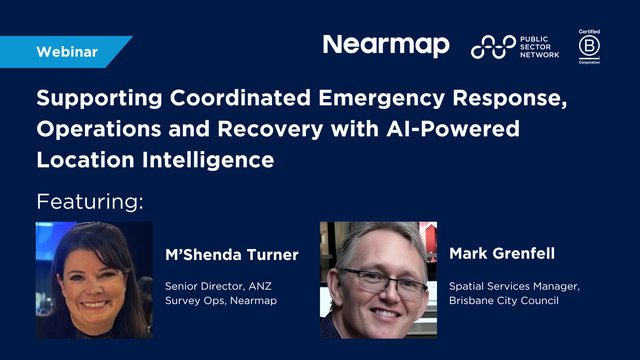
In today's digital age, where data reigns supreme and drives critical decision-making, organisations face a staggering reality: bad data costs businesses an average of $AUD20 million, amplifying exponentially for larger enterprises. With this ominous warning in mind the Major Transport Infrastructure Authority (MTIA) of Victoria, Australia recently underwent a mass transformation to cultivate a culture of reliability and data-driven decision-making within the organisation, ensuring that the portfolio of projects, totalling over $90 billion, is delivered effectively.
The MTIA works to ensure major construction activities and disruptions are coordinated across the network. This includes plans to keep the almost 7 million strong population of the state moving and safe through major road and rail work periods. Harnessing data smartly is key to getting this done.
At the helm of MTIA's commitment to safety and efficiency is Saher Junaid, the Assistant Director of Digital Safety Systems. At the recent Data Management & Analytics Roadshow in Melbourne Saher shared details of MTIA’s implementation of a multi-cloud architecture along with how the comprehensive data governance strategies integrated are driving resilience and continuous improvement.
Tackling Data Challenges Head On
The MTIA envisioned a centralised system for reporting health and safety (H&S) incidents and safety assurance activities. However, the existing landscape was rife with challenges, characterised by fragmented data and compromised reliability.
Saher underscores the criticality of data quality, noting, "the cost of bad data to organisations is significant, we knew that,” but data issues permeated the entirety of the data lifecycle, from inadequately designed source systems to deficient data transformation processes and unreliable business logic applications. Acknowledging the need for a holistic approach, the team at MTIA initiated a comprehensive digital transformation to tackle data and system reliability head-on.
Saher’s team embarked on an exhaustive assessment of existing systems, processes, and stakeholder feedback to identify the root causes of the reliability issues. The assessment uncovered a plethora of challenges, including inconsistent system usage, protracted onboarding processes, and a dearth of system documentation and control. Furthermore, insufficient consideration for reporting requirements and overreliance on vendors exacerbated the reliability concerns.
Compounding the issue further was that the Authority was very early on in the digitisation stage. “There was only the Incident Management element that was digitised so far,” says Sahar. “There were other numerous activities which were waiting to be digitised and no governance model.”
Drawing from Boston Consulting Group's research, they formulated a strategic framework encompassing six core elements crucial for successful digital transformation. "Our analysis provided a comprehensive view of the digital landscape, revealing critical gaps in data reliability and system efficiency," says Saher. The findings underscored the urgency for transformative measures to fortify the organisation's data management infrastructure.
Championing Data Reliability with Multi-Cloud
In response to the identified challenges, and with a roadmap in hand, Saher advocated for the adoption of a multi-cloud architecture. Multi-cloud solutions harness the capabilities of multiple cloud providers to distribute workloads, mitigate risks, and enhance scalability and reliability. By diversifying cloud resources, MTIA sought to minimise downtime, bolster data redundancy, and fortify overall system resilience.
"Multi-cloud architecture offers unparalleled flexibility and resilience, empowering us to optimise resource allocation and ensure uninterrupted service delivery," says Saher
Transitioning from strategy to execution, the team devised a short to long-term plan aimed at maximising existing systems while implementing quick wins to rebuild credibility. "We wanted to take users through a journey, gradually advancing from quick wins to more complex processes, ultimately achieving self-sufficiency in managing our systems," explains Saher.
Their journey began amidst an environment characterised by disjointed systems and manual processes. The objective? To evolve towards an integrated, in-house managed system, leveraging the benefits of a cloud-based architecture.
Their roadmap led them from a solitary SAS environment to a unified, in-house managed platform integrated with multiple SAS environments. "We now have a main in-house managed environment integrated with multiple SAS environments, enabling cost savings and enhanced scalability," notes Saher. The benefits of their integrated model extend beyond cost savings though. "With in-house management, we've gained agility and scalability, allowing us to deliver innovative solutions while focusing on business critical needs," she adds.
Throwing New Systems in the Deep End
MTIA embarked on this transformation back in 2019. In 2020, at the onset of the Covid-19 Pandemic the transformation was still underway, but their integrated model proved its mettle. At the time regulatory requirements necessitated real-time reporting of health and safety data from infrastructure project worksites. Saher explains, "we conducted internal workshops, performed pilot projects, and rolled out training sessions to meet regulatory demands." Leveraging interconnected systems, they delivered real-time Covid-19 reporting, fostering government confidence and project continuity amidst the pandemic.
Saher highlights the significance of their integrated model in rebuilding trust and delivering consistent results. She says; "data and system reliability underpin operational efficiency and trust. Our integrated model has not only rebuilt credibility but also enabled us to achieve our vision."
Saher underscores the pivotal role of governance in their journey. "Establishing governance mechanisms was really important to us, and we spent a lot of time establishing them to ensure sustained system management and compliance. A top-down and bottom-up approach ensured executive buy-in and user engagement, driving continuous improvement."
Their success story underscores the transformative impact of governance-centric, integrated multi-cloud architecture. Saher affirms, "the inhouse model we have implemented exemplifies the criticality of governance in ensuring system reliability and resilience. It allows us to actually deliver innovative solutions in a quicker, more agile manner.” By fostering a foundation of system reliability and a culture of accountability, MTIA have fortified the Agency's digital foundation for the future.
































